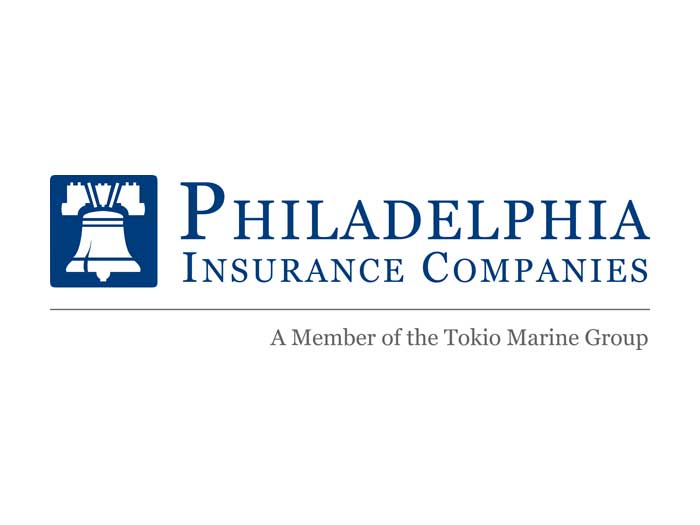COVID Hammered Business Cash Flows. The Risk Transfer Solutions Workers’ Comp Self-Insureds Are Turning To

Many companies have traditionally used some combination of self-insurance, risk transfer or alternate risk transfer, such as captives, to manage their workers’ compensation exposures.
But the recent pandemic threw a wrench into many programs. Premiums and new injury claims fell as employers laid off or furloughed staff. Insureds worried about the affects the virus and COVID-19 presumptions could have on their business.
“There were pretty dramatic models created initially, as we were dealing with a completely unprecedented situation,” said Matthew Zender, senior vice president, workers’ compensation strategy at AmTrust Financial Services, Inc.
“While some of the initial assumptions anticipated movement in some pretty dramatic areas, the lasting impact was more traditional, such as payroll changes — as employers reduced headcount and then scaled back — and exposure changes — as employers evaluated different business models and changed their operations.”
With the ravages of the past year still resonating through many business models, companies are reevaluating their workers’ compensation programs and determining the best way to manage their risks while protecting their bottom line.
So how are companies currently managing compensation risk while protecting their cash reserves and fulfilling collateral requirements?
Zender said initially, it appeared companies were hesitant to try anything that represented a departure from their own history. If they had transferred risk before, they remained open to that concept.
“But from what I saw, most companies didn’t stray into new territories during the pandemic. It felt like companies wanted fewer things to worry about and thus fewer variables,” Zender said.
“As we are moving through the pandemic, I suspect we will start to see companies evaluating the traditional debate of ‘my cash versus your cash’ and will evaluate these options with their agents.”

Brian Reardon, head of claims, Maiden Global Servicing Company
But Brian Reardon, head of claims, Maiden Global Servicing Company, said the recent pandemic has shaken the workers’ compensation industry, especially self-insured organizations, which were impacted both operationally and financially. For self-insureds, these recent events have tested their resilience as volatile cashflows and economic conditions have impacted their businesses.
As Reardon pointed out, these impacts have led employers to re-examine their insurance programs, including self-insurance retentions, use of alternative funding arrangements, and existing liability and collateral obligations.
“Early indicators suggest the workers’ compensation market is beginning to harden and alternative risk transfer solutions may continue to be the most cost-effective means for employers,” Reardon said.
Recent deal activity within the reinsurance marketplace highlights how self-insureds are using the recent events as an opportunity to shed existing liabilities and re-structure their programs as a part of their long-term business strategy.
“The puzzle now for many self-insureds is how to optimize their program effectively moving forward, balancing the need of present-day exposures while still meeting the obligations of its long-tail liabilities,” Reardon said.
“There will be challenges for employers in the private marketplace as workers’ compensation insurers, which were already experiencing declining premiums from years of state’s downward push on rate, exited the marketplace as the pandemic became the ‘final straw.’”
Exploring New Avenues
The options presented by the alternative risk market have been increasingly utilized by employers in recent years to cover their workers’ compensation obligations.
As Thomas Hodson, president and general counsel, Genesis Legacy Solutions explained, self-insurance, including captives, is popular because it allows employers to control and manage their own risk. It can also be a less expensive option than the traditional market.
“It’s no secret that the COVID-19 pandemic put a cash crunch on many employers, large and small, from the hospitality industry to the airlines, few companies were unaffected. Cutting costs wherever possible has become a matter of survival,” Hodson said.
“As a result, more and more employers looking to save money through self-insuring their workers compensation risks.”
The pandemic has also driven new interest in the legacy insurance market, as companies seek to eliminate risk by shedding old insurance liabilities. According to Hodson, loss portfolio transfers, assumption reinsurance and other forms of novation are allowing self-insureds to protect their balance sheets and increase capital by moving risk off their books and to specialist legacy insurers.
“Through the use of these strategies, employers can eliminate the uncertainty of run-away liabilities, get out from under harsh collateral obligations associated with self-insurance,” Hodson said.
“Further, employers with high deductible programs in the traditional market, often collateralized, can move that exposure to legacy insurers as a means to protect, and even increase, capital. Once viewed as an option of last resort, the legacy insurance market is now seen as a good business planning strategy, allowing companies to focus on managing their business for today and tomorrow, rather than worrying about yesterday and the day before.”
“Early indicators suggest the workers’ compensation market is beginning to harden and alternative risk transfer solutions may continue to be the most cost-effective means for employers.” — Brian Reardon, head of claims, Maiden Global Servicing Company
Companies also are examining self-insurance and captive programs to gain more control over their risk financing.
As Reardon explained, while many organizations have been engaged in the alternative risk transfer marketplace for years, the effects of the recent pandemic have reignited those companies that have been sitting on the sideline to change approaches.
“The recent pandemic effects have caused claim frequency to drop, raised new questions around presumptive compensability for COVID claims, and added uncertainty in the workers’ compensation system,” Reardon said. The pandemic highlights the issue companies can have covering their workers for unforeseeable events.”
And as revenues have dropped for many companies, traditional insurance may begin to get more expensive. Ultimately, Reardon said, it appears the market is beginning to harden and employers are reassessing the cost-benefits of using alternative risk transfer.
“This is especially true as regulators in key domiciles, such as Vermont, only improve its flexibility in creating a program that is the ‘perfect fit’ for the employer’s current and/or long-tail exposures,” Reardon said.
Focusing on the Future
Industry experts pointed out employers will encounter a range of challenges over the next few years as they seek to recover from the effects of the pandemic. Reardon said self-insureds will need to stabilize their balance sheets and possibly re-design self-insured programs to align with changes in revenue and business model.
“And employers will not only face higher rates in the traditional guarantee-cost marketplace due to a hardening market, but risk managers will be asked to find creative solutions to meet the organization’s financial objectives,” Reardon said.

Matthew Zender, senior vice president, workers’ compensation strategy, AmTrust
Economic and operational challenges will create additional difficulties as rehiring begins, increasing not only payroll costs, but the potential for higher claims frequency as new untrained employees are onboarded.
Reardon expects there will be long-term impacts as employers attempt to manage new exposures such as COVID-19 and other communicable disease exposures.
“While policy language has traditionally excluded these diseases, state legislation providing presumptive eligibility for certain classes of workers has insurers and self-insured employers clamoring to understand how these exposures will impact their claims liabilities and future exposure,” Reardon said.
Post-pandemic, Zender expects employers to begin to re-focus at least some of their attention towards workers’ compensation space.
“They were understandably distracted for the last year, and unless there was an issue that was directly affecting them, it was tabled,” Zender said.
“In terms of the far-reaching effect, we will be able to point to this period in history and notate its effect. We will see changes in the way that employers engage with employees, the way employees interact with customers, the way employers interact with their insurance carrier and the way injured workers interact with their medical providers. In each of these areas, we will be able to see the impact of COVID-19 on the workers’ compensation space, as it served as a force multiplier for change.” &










